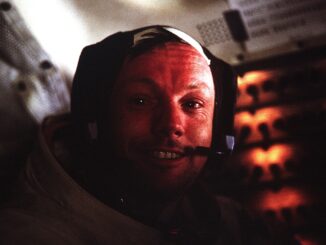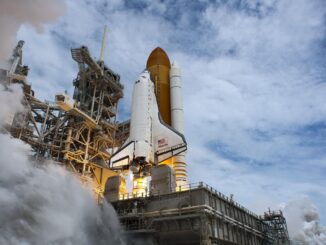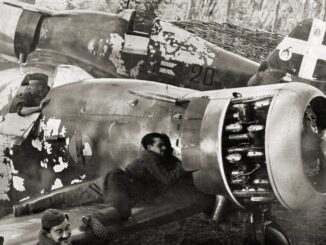
Long, long time ago, in a galaxy far, far away… That´s how usually the space tales begin, but it´s not going to work this time. Actually, we would like to tell you the story about something, that in fact happened quite a long time ago – as long as fifty years, and also far away – as far as 384 400 km from here.
Nevertheless, not in a distant galaxy, but on a distant celestial body. And what’s the most important – that history was written in front of our eyes. This is our first part of the series devoted to human conquest of the Moon. As this year it’s been 50 years since a man stood on the lunar surface, at first we will tell you how happened that the people have landed on the Moon, providing you the history of the Apollo Programme and the Apollo 11 mission.
Probably since the very beginning of humanity on Earth, people used to look at the sky. Especially at night, observing all those shiny dots, among which there was one, that seemed especially big and close to us. In the course of time and with development of civilization, people – guided by the curiosity and willingness to learn and explore, what is lying in the human nature, began to look at the sky more and more, carrying increasingly deeper and more complex observations, using the benefits of progressively advancing technology. They started to discover space, trying to understand its nature. However, with time, people – guided with their instinct of explorers, came to the conclusion, that observations are not enough. They began to think, what could they do, to reach the space and all those celestial objects, they were observing since ages. The chances for that, appeared only in the 20th Century.
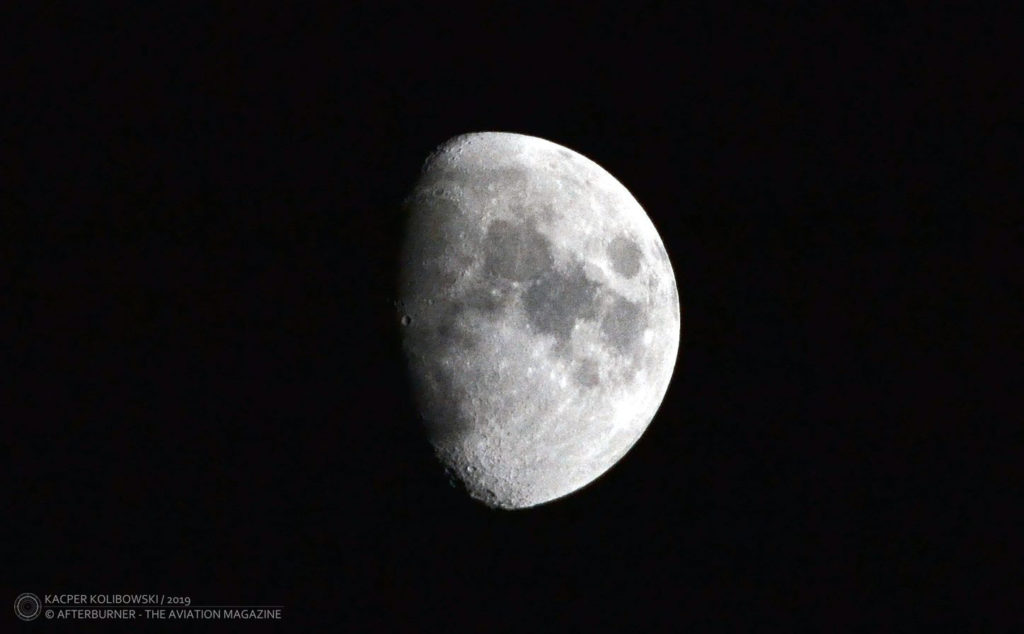
The beginning
The rapid development of rocket technology was initiated by Germany in the 1920s. During the Second World War, the Germans have created – among the others, the V-2 missile, which was the first ballistic rocket in history, that reached altitude of 100 kilometres, crossing the so-called Kármán line (the contractual borderline between the Earth’s atmosphere and outer space). With the end of the war, the race for the German scientists and technicians began, as both new superpowers – the United States and the Union of Soviet Socialist Republics – wanted to capture as many of them as possible. During the American secret programme called Operation Paperclip more than 1,600 German specialists were moved to America and more than 2,200 scientists, engineers and technicians were recruited by the Soviet Union during the Operation Osoaviakhim.
Both the US and the USSR planned to use the German specialists for their own purposes, with the primary goal of achieving the military advantage and the priority in already started atomic and space races. The group recruited by Americans included 127 German rocket specialists, leaded by Wernher von Braun (the head of the already mentioned V2 rocket programme). Soon, the post-war political tensions between the superpowers led to the open rivalry in the economic and technological fields and the space conquest became one of the primarily recognized competitions.
Following the launch of Sputnik 1 – the Earth’s first orbital satellite, into space by the Soviet Union on 4th October 1957, the US Congress created the United States House Select Committee on Aeronautics and Space Exploration in 1958. Yet in the same year, the committee has drafted the National Aeronautics and Space Act of 1958, which was signed into law the US President Dwight D. Eisenhower, on July 29th that year. The Act was adopted to establish a separate organization, that could keep the process of American space exploration. In fact, it was decided to combine the National Advisory Committee for Aeronautics (NACA) – the US federal agency taking care of aeronautical research since 1915, with few other government organizations into one institution. That’s how the now world’s most famous space agency – NASA, was founded.
The National Aeronautics and Space Administration – what is the full name of the agency, officially started on 1st October 1958 and immediately began to improve the already started work on human and robotic spaceflight. The NASA’s first famous program was Project Mercury, conducted between 1958 and 1963. The purpose of the project was to acquire knowledge if humans could survive in space. Their next, big program was Project Gemini, between 1961 and 1966. This time, the goal was to use two-man spacecraft, crewed by astronauts to improve to perfection the capabilities needed for the then main American objective of sending men to the Moon within Project Apollo.
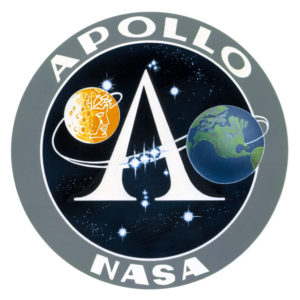
The launch of the Apollo Programme
On 25th May, 1961, John F. Kennedy, the then President of the United States, declared that the USA will go to the Moon before end of the decade. Nevertheless, at that time, such a statement seemed like a commitment of doing impossible. The Americans haven’t had anything needed to reach such a goal. They haven’t had an appropriate rocket, launchpads, spacesuits, necessary network of tracking stations, which would allow tracking the spaceship and communicate with the crew en route.
They even haven’t had appropriate computers, which were one of the key elements for the mission to be successful, as they would to guide people to the Moon and help them land on that natural satellite of the Earth. Not to mention the lack of some of the tools needed to build all the necessary equipment. When on May, 1961, Kennedy asked Congress to launch Americans to the Moon, NASA and its team of scientists and engineers (certainly, still including Wernher von Braun and his V2 development team) – have faced the greatest challenge so far, which is now known as the Project Apollo.
In fact, the Apollo Programme was an undertaking of an unprecedented scale, both in terms of people working on it and money allocated in it. As to the people, it is enough to say, there was three times as many people involved on the mission to send humans on the Moon, as on the Manhattan Project, the goal of which was to create the atomic bomb. As the Project Apollo gained the highest priority status for US Presidents, they – through constant consultations with the NASA authorities and team of specialists responsible for making the goal possible, were trying to allocate for that purpose as much money from the national budget as only possible.
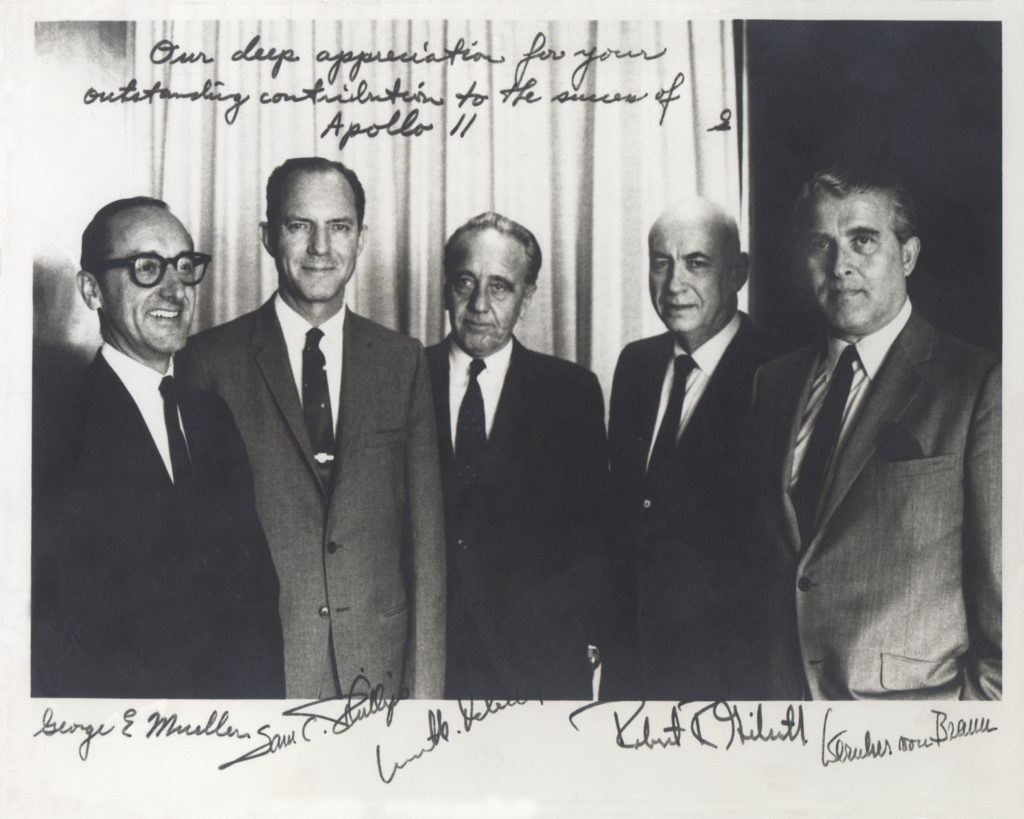
In order to put the costs in perspective it is enough to say, that since the beginning of the Apollo Programme development in 1961, through only three years when the project was under Kennedy’s administration, the United States were spending about $1 million on space-related budget line each year, and that was more than the whole space budget from the entire decade of the 1950s (when the US space programme was administrated by then President Dwight Eisenhower). Five years later, when the Apollo Programme was already supervised by President Lyndon Johnson, NASA was spending on the Apollo Project about $1 million every three hours, day by day. The overall cost of the programme totalled $25,4 billion, what stated the largest commitment of resources ever made by any nation in peacetime for a single undertaking. What’s more, landing men on the Moon, required work of 400,000 people and support of over 20.000 industrial companies and universities in total.
Speaking of presidents within the context of Apollo Programme, one tragic historical event should be also remembered, even though not directly related to the project. On 22nd November, 1963, only three years since the programme has started, John F. Kennedy has been assassinated in Dallas on his way to Dallas Trade Mart, where he planned to give another speech about improvement of the US space programme. Six days after that shocking event, Kennedy’s successor, President Lyndon B. Johnson, during his Thanksgiving Day speech informed, that honouring his predecessor the new NASA field centre in Florida was named the John F. Kennedy Space Centre, together with renaming its location at Cape Canaveral as Cape Kennedy.
It’s also worth to mention about the American nation’s attitude to the plan of sending humans on the Moon, which wasn’t much optimistic, contrary to the politics´ desire to win the space race with Soviet Union. The US society in 1960s was divided, mostly because of the Vietnam War and the country was full of protests and riots. In that situation, Americans were thinking that Apollo Programme and other government’s space-related activities are just waste of money, whereas people can’t solve their problems here on Earth. And there were also some scientists, that were sharing this opinion.
Despite all the hardships and mentioned lack of public acceptance the NASA specialists coped with their task, creating the comprehensive range of facilities, tools and equipment to make this exceptional project successful.
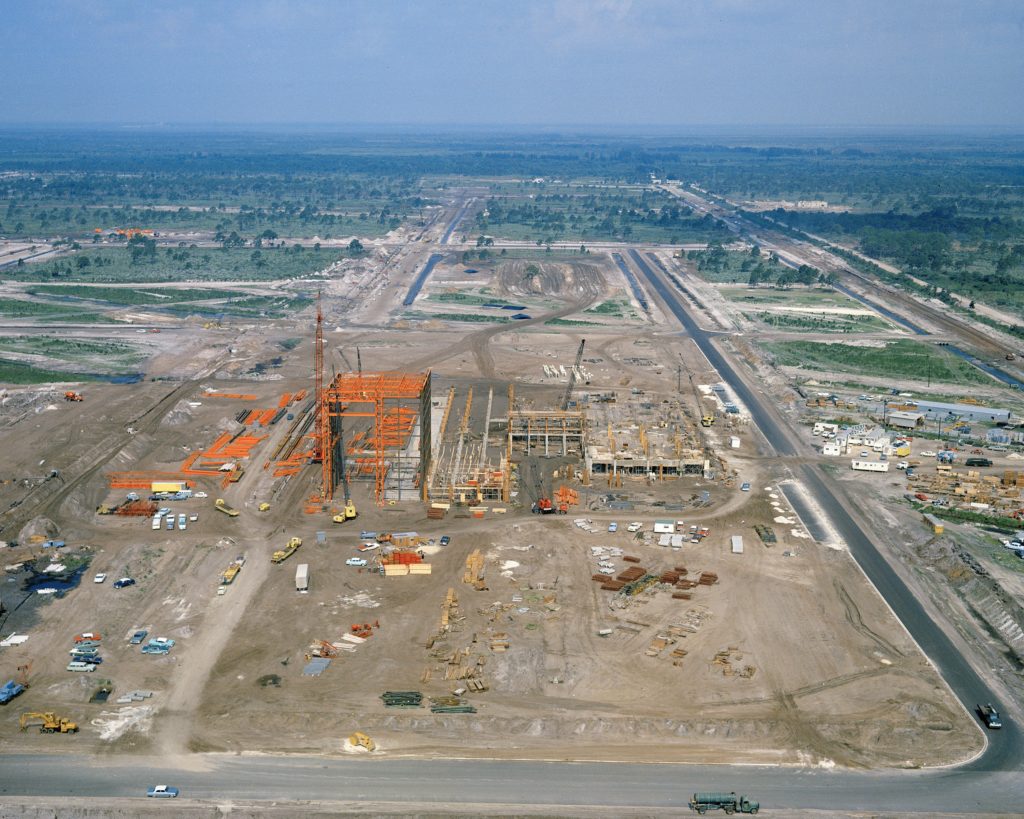
Facilities are what we need
Sending humans on the Moon, undoubtedly wouldn’t be possible without sufficient facilities, that played a crucial role in the whole process. Well… on the day, when Kennedy announced the release of the Apollo Programme, only one American astronaut had flown into space, less than a month before. Additionally, at the beginning, even some NASA specialists doubted if they can manage the task entrusted to them by their president.
Administration of the Apollo programme exceeded the capabilities of Space Task Group, directing the American manned space programme from NASA’s Langley Research Centre, led by Robert R. Gilruth. Shortly Gilruth was allowed to grow his organization into a new NASA centre, called the Manned Spacecraft Centre (MSC) with Houston, Texas, chosen as its location. Subsequently, the Mission Control Centre for the Apollo Programme was established there. The MSC was completed in September 1963 and later was named after President Lyndon B. Johnson, after his death in 1973.
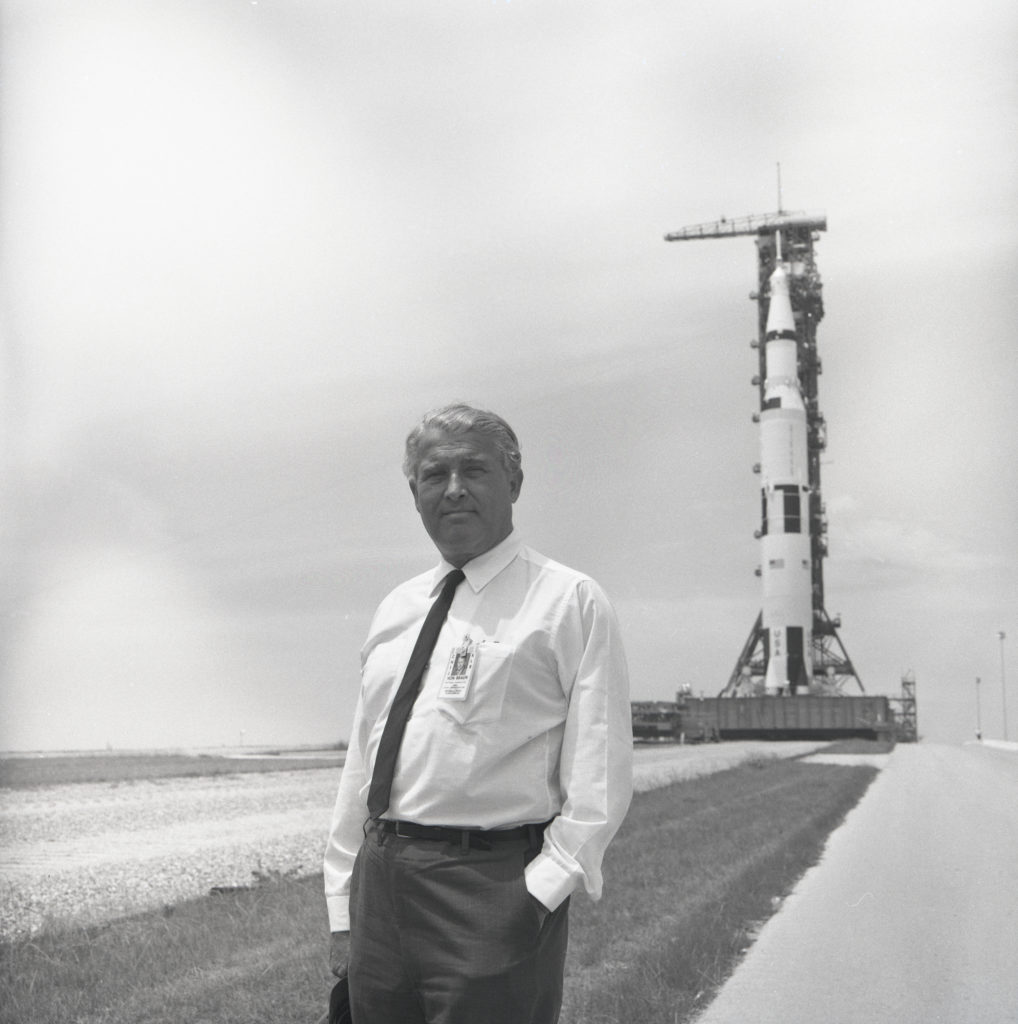
Concurrently, on 1st July 1960, NASA established the Marshall Space Flight Centre (MSFC), headquartered in Huntsville, Alabama. This facility was responsible for designing the heavy lift rocket, required for the Apollo Programme.
For the need of launching the rockets, used within the Project Apollo, two launch complexes – LC-34 and LC-37 were built in the Cape Canaveral Air Force Station. At Merritt Island, just North from Cape Canaveral, the Launch Operations Centre (LOC) was built. Interesting fact is that the development and construction of the LOC was managed by Kurt. H. Debus, one of the von Braun’s V2 rocket specialists. Debus also became first director of the centre.
This facility included another Launch Complex – LC-39 (as it turned out later – the most iconic one) and among the others a huge (130 million cubic feet / 3,7 million cubic meters) Vertical Assembly Building (in short – VAB), where rockets and spacecrafts were being built.
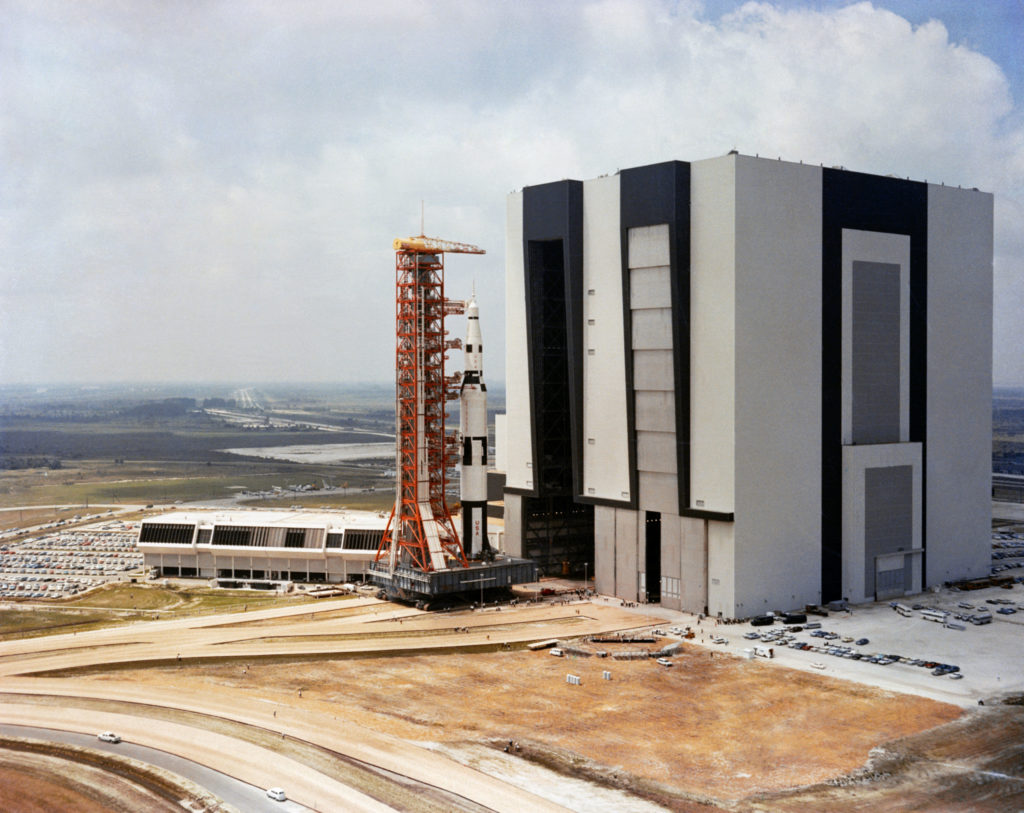
They were being constructed on a Mobile Launcher Platform, to – subsequently, be moved by a huge crawler-transporter (used later also to transport the NASA space shuttles) to one of two launchpads of the LC-39. Previously three launchpads were planned to be built within the LC-39, but only two, marked as A and B were built until 1965. The third – C, was build only many years later in 2015.
Moreover, the LOC complex, also included an Operations and Checkout Building (OCB), where the Gemini (from the previous US space programme) and Apollo spacecrafts were forwarded to, for being mounted on the rockets that had to launch them into space. Additionally, two vacuum chambers were built in the complex, to test the Apollo spacecraft. The chambers were simulating atmospheric pressure at altitudes up to 250,000 feet (76 km) as such a low pressure creates conditions very close to a vacuum existing in space.

The Apollo spacecrafts
Certainly, the programme wouldn’t be accomplished without vehicles that could transfer people to the Moon and back. Yet before the Apollo program began, Wernher von Braun and his team begun work on plans of a very large launch vehicles of the Saturn and Nova series. Nova had to be bigger one of them, but finally was never built. Shortly thereafter von Braun was transferred from the Army to NASA and was entrusted function of Director of the Marshall Space Flight Centre in Huntsville.
Regarding the way how to send a human on the Moon and back, a few different concepts were initially discussed. The first of them was to send the three-person Apollo command and service module directly to the surface of the Moon, using a large descent rocket stage. That plan would require a Nova-class rocket, that was supposed to have a lunar payload capability of over 180,000 pounds (82,000 kg).
Nevertheless, on 11th Junek, 1962, it was decided to use the lunar orbit rendezvous variant for the Moon mission, and as a result the Saturn V rocket was used for the purpose, freezing the Nova project. Three types of Saturn rockets were developed for the needs of the programme – the first Saturn I was used until 1965, mostly for basic and low Earth orbit tests with partially equipped Command Service Modules. The last three flights of Saturn I additionally supported the Apollo program by carrying Pegasus satellites, to verify the safety of the translunar environment by measuring the frequency and severity of micrometeorite impacts.
The second rocket – Saturn IB, used between 1966 and 1975, was an improved version of the Saturn I. Every one of her stages had more powerful engines than Saturn I. The IB variant could launch over 40,000 pounds (18,100kg) of load, what was enough to lift a partially fuelled Command Service Module or the Lunar Module into low Earth orbit.

The last and the most famous rocket from the Saturn family, an absolute symbol of the Apollo Programme, was the Saturn V. That was the actual rocket that brought people to the Moon. It was 33 feet (10,1 m) in diameter and stood 363 feet (110,6 m) tall. Saturn V was able to launch 96,800 pounds (43,900 kg) and then later 103,600 pounds (47,000 kg) of lunar payload.
A remarkable fact is that the Saturn V remains the tallest, heaviest, and most powerful (highest total impulse) rocket ever brought to operational status, and holds records for the heaviest payload launched and – with thanks to upgrades done for the needs of the rocket’s last three missions – the largest payload capacity to low Earth orbit (LEO) of 310,000 pounds (140,000 kg), which included the third stage and unburned propellant needed to send the Apollo Command/Service Module and Lunar Module to the Moon – as operated between 1967 and 1973.
The few famous companies of aeronautical and car industry were involved in producing the Saturn family rockets, including – Chrysler, Convair (Saturn I), Douglas (Saturn I, IB and V), North American and Boeing (Saturn V).

Another very important vehicle, without which it would be impossible to land on the Moon was the Lunar Module. It can safely be said that Lunar Module was the most sophisticated spacecraft at that time. It was designed to carry two astronauts from lunar orbit to the surface of the Moon and then let them return to the Command Service Module orbiting the Moon.
The module wasn’t supposed to return to Earth and fly through the atmosphere. Therefore, it could be designed without considering any aerodynamic characteristics, and was developed as an extremely lightweight construction. The spacecraft, consisted of separate descent and ascent stages, and each of them had its own engine. The descent stage contained storage for the descent propellant, surface stay consumables as well as equipment for the exploration of the lunar surface. The ascent stage contained the crew cabin, ascent propellant, and a reaction control system.
The first variant of the Lunar Module weighed approximately 33,300 pounds (15,100 kg) and allowed astronauts for staying on the surface up to about 34 hours. An improved lunar module weighed over 36,200 pounds (16,400 kg) and allowed its crew to stay on the Moon surface for over 3 days.
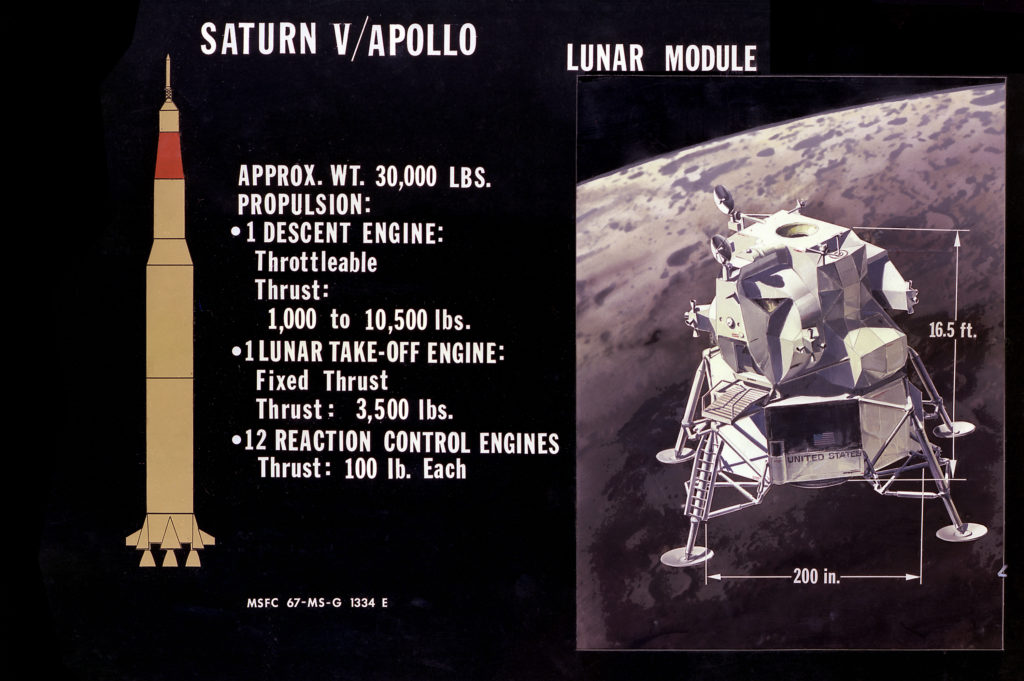
It should be pointed out that the engines installed in the module were the technical innovation at the time of their creation. Not only because of their weight (a Lunar Module engine weighed less than an engine of a typical midsize car), but also because the possibility they could be throttled. That made them the first rocket engines in history the power of which could be decreased or increased.
The Lunar Module was also equipped with a very advanced navigation, life-support systems and electronics. In fact, to send people on the Moon, NASA in both modules – LM and CSM has used the most advanced, the fastest and the smallest computer in the world of that time. The Lunar Module was designed and then built by Grumman Corporation, in the company’s factory located on Long Island – exactly the same facility, where 20 years earlier Grumman had produced 12,275 of World War II famous Hellcat fighters.
When NASA overcame the techical difficulties related to the goal and had all they needed, the USA was ready for the lunar conquest.
Our story of the Apollo 11 mission and the Apollo Programme, will be continued in next articles within the series.
Sources:
- “What you didn’t know about the Apollo 11 mission – from JFK’s real motives to the Soviets’ secret plot to land on the Moon at the same time, a new behind-the-scenes view of an unlikely triumph 50 years ago” by Charles Fishman
- www.nasa.gov
- Wikipedia.org

